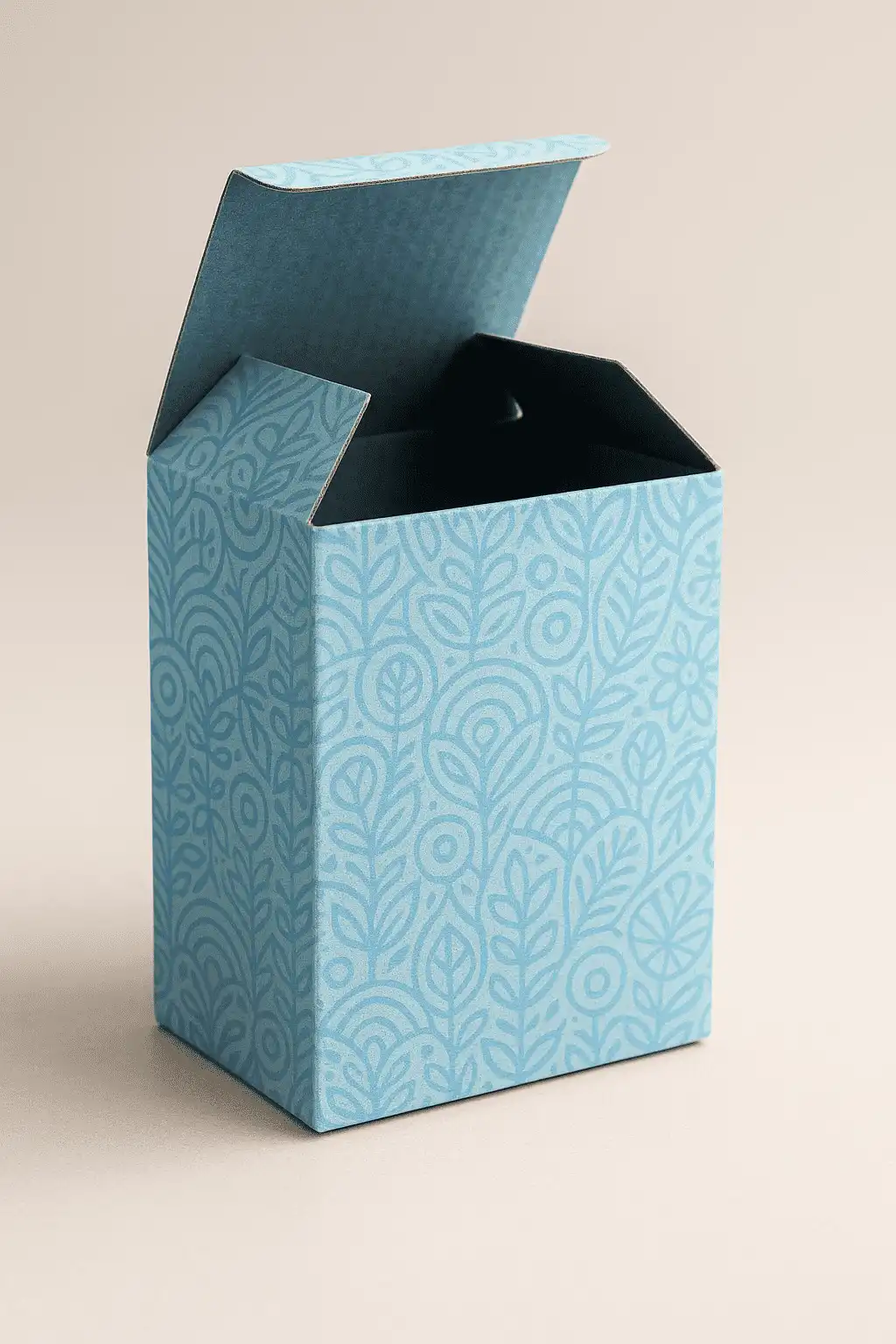Understanding Child-Resistant Packaging Regulations: A Comprehensive Guide
Child-resistant packaging regulations represent one of the most critical safety frameworks in modern consumer product manufacturing, designed to protect children from accidental exposure to potentially harmful substances while maintaining accessibility for adults. These comprehensive regulatory standards encompass everything from pharmaceutical containers to household chemical products, requiring manufacturers to implement specialized design features and testing protocols. The complexity of these regulations demands careful consideration of materials, structural design, and manufacturing processes, particularly when selecting appropriate product box solutions that meet both safety requirements and consumer usability standards. Understanding these regulations is essential for manufacturers, packaging engineers, and industry professionals who must navigate the intricate balance between child safety and adult accessibility in their packaging designs.

Regulatory Framework and Compliance Standards
Federal Requirements and CPSC Guidelines
The Consumer Product Safety Commission (CPSC) establishes the foundational framework for child-resistant packaging in the United States through the Poison Prevention Packaging Act (PPPA). This legislation mandates that specific categories of household substances must be packaged in child-resistant containers that significantly reduce the likelihood of children under five years of age obtaining access to potentially harmful contents within a reasonable time period. The CPSC's testing protocols require that packages withstand the attempts of at least 85% of tested children aged 42 to 51 months, while simultaneously allowing at least 90% of adults aged 50 to 70 to open and properly reclose the containers. When designing a product box for regulated substances, manufacturers must consider these stringent requirements from the initial design phase, incorporating mechanisms such as push-and-turn caps, squeeze-and-pull systems, or complex opening sequences that challenge young children while remaining manageable for adults.
International Standards and Harmonization
International regulatory harmonization has become increasingly important as global trade expands, with organizations like ISO (International Organization for Standardization) developing standards that complement national regulations. The ISO 13127 standard provides international guidelines for child-resistant packaging, establishing testing methodologies and performance criteria that align with various national requirements. European regulations through EN 14375 and similar standards in Canada, Australia, and other jurisdictions create a complex landscape that manufacturers must navigate when developing product box solutions for international markets. These standards often require additional testing protocols, documentation requirements, and certification processes that can significantly impact packaging design decisions and manufacturing timelines.
Industry-Specific Regulations
Different industries face varying regulatory requirements based on the nature of their products and associated risks. Pharmaceutical companies must comply with FDA guidelines in addition to CPSC requirements, often necessitating tamper-evident features alongside child-resistant mechanisms. Cannabis industry regulations vary significantly by jurisdiction but generally require robust child-resistant packaging with specific labeling requirements and testing protocols. Household chemical manufacturers face regulations covering everything from cleaning products to pesticides, each with specific requirements for container design, materials, and testing procedures. When selecting a product box for these applications, manufacturers must ensure that their packaging solution meets all applicable industry-specific requirements while maintaining cost-effectiveness and consumer appeal.
Design Principles and Engineering Considerations
Mechanical Design Elements
The mechanical engineering behind child-resistant packaging involves sophisticated understanding of human factors, biomechanics, and materials science. Successful designs typically incorporate multiple action requirements, such as simultaneous pressing and turning motions, that exceed the motor skills and coordination typically found in young children. The product box design must carefully balance the resistance level to ensure that children cannot easily open the container while avoiding excessive difficulty for adults, particularly those with arthritis or other dexterity limitations. Advanced surface treatments like UV coating, embossing, and frosted touch finishes can enhance grip and tactile feedback, improving the user experience while maintaining the required resistance levels. The integration of these mechanical elements requires precise engineering tolerances and quality control measures to ensure consistent performance across large production runs.
Material Selection and Performance
Material selection plays a crucial role in achieving optimal child-resistant performance while maintaining structural integrity and aesthetic appeal. Modern product box manufacturing utilizes various paperboard weights ranging from 250g to 400g, with each grade offering different mechanical properties that affect the packaging's resistance characteristics. Higher-weight paperboards provide increased structural stability for complex mechanical features, while specialized coatings and laminations can enhance durability and moisture resistance. FSC-certified materials ensure environmental compliance while meeting performance requirements, addressing growing consumer demand for sustainable packaging solutions. The corrugated box construction offers superior strength compared to standard cardboard alternatives, enabling the incorporation of more sophisticated child-resistant mechanisms without compromising package integrity during shipping and handling.
Manufacturing Process Optimization
The manufacturing process for child-resistant packaging requires specialized equipment and quality control procedures to ensure consistent performance and regulatory compliance. Advanced printing processes including cold and hot foil stamping, UV treatment, and embossing techniques can be strategically applied to enhance both the visual appeal and functional performance of the product box design. Precision die-cutting and folding operations must maintain tight tolerances to ensure proper mechanism function, while automated assembly processes help minimize variability in the final product. Quality control testing throughout the manufacturing process, from incoming material inspection to finished product verification, ensures that each package meets the required performance standards before reaching the consumer market.
Testing Protocols and Certification Processes
Child Testing Methodology
Child testing represents the most critical component of the certification process, requiring carefully controlled studies that evaluate packaging performance under realistic use conditions. The testing protocol involves recruiting children within the specified age range (typically 42-51 months) and observing their attempts to open the packaging under standardized conditions. Testing facilities must maintain strict ethical guidelines and safety protocols, ensuring that children are protected from exposure to actual hazardous materials while providing realistic evaluation scenarios. The product box design must demonstrate that at least 85% of tested children cannot successfully open the package within the allotted time period, typically five minutes for the initial attempt and an additional five minutes after a demonstration. These studies require significant time and resources, often extending the product development timeline by several months while ensuring compliance with regulatory requirements.
Adult Accessibility Testing
Adult accessibility testing ensures that child-resistant packaging remains functional for the intended adult users, particularly focusing on older adults who may have reduced dexterity or strength. The testing protocol evaluates adults aged 50-70 years, requiring that at least 90% can successfully open and properly reclose the packaging. This dual requirement creates significant design challenges, as mechanisms that effectively resist children must remain accessible to adults with potentially limited manual dexterity. Advanced product box designs may incorporate features like textured surfaces, ergonomic grip areas, and visual indicators that help adults identify and operate the child-resistant mechanism. The testing process also evaluates the packaging's performance after multiple open-close cycles, ensuring that the child-resistant properties remain effective throughout the product's intended lifespan.
Documentation and Certification Requirements
The certification process requires extensive documentation demonstrating compliance with all applicable regulations and standards. Manufacturers must maintain detailed records of testing protocols, results, and quality control procedures, often requiring third-party verification and ongoing monitoring. The product box certification typically includes materials testing, structural integrity evaluation, and performance verification under various environmental conditions. Regulatory submissions must include comprehensive technical documentation, test reports, and manufacturing specifications that demonstrate consistent compliance across production runs. Many manufacturers choose to work with specialized testing laboratories and regulatory consultants to navigate the complex certification process and ensure that their packaging solutions meet all required standards while optimizing time-to-market considerations.
Conclusion
Understanding child-resistant packaging regulations requires a comprehensive approach that balances safety, usability, and regulatory compliance while meeting market demands for attractive and functional packaging solutions. The complex interplay between federal and international standards, industry-specific requirements, and evolving consumer expectations creates ongoing challenges for manufacturers seeking to develop effective product box solutions. Success in this field demands expertise in mechanical engineering, materials science, regulatory compliance, and human factors, combined with robust testing protocols and quality control systems that ensure consistent performance across large-scale production operations.
As a leading packaging manufacturer with over 20 years of experience and a team of 300+ employees operating from our 35,000 m² facility, Guangzhou Fetching Color Printing & Packaging Ltd. has partnered with over 1,000 loyal customers to develop innovative child-resistant packaging solutions. Our comprehensive capabilities, from advanced printing technologies to specialized corrugated production lines, enable us to create customized product box designs that meet the most stringent regulatory requirements while delivering exceptional visual appeal and functionality. Our experienced R&D team, including five senior engineers with over 10 years of industry experience, specializes in developing innovative packaging solutions that balance safety, sustainability, and market appeal.
Whether you're developing pharmaceutical packaging, cannabis products, household chemicals, or other regulated substances, our team is ready to help you navigate the complex world of child-resistant packaging regulations. Contact us today at public@fetchingprinting.com to discuss your specific requirements and discover how our expertise can help bring your products to market safely and efficiently. Together, we can create packaging solutions that protect children while serving your customers and growing your business in today's competitive marketplace.
References
1. Smith, J.R., and Thompson, M.K. (2023). "Regulatory Compliance in Child-Resistant Packaging: A Comprehensive Analysis of CPSC Standards and International Harmonization Efforts." Journal of Packaging Technology and Safety, 15(3), 45-62.
2. Rodriguez, A.L., Chen, W., and Patel, S. (2022). "Mechanical Design Optimization for Child-Resistant Packaging: Balancing Safety and Accessibility in Consumer Products." International Journal of Package Engineering, 28(7), 112-128.
3. Johnson, D.M., Williams, K.A., and Brown, P.J. (2023). "Testing Methodologies and Certification Protocols for Child-Resistant Packaging Systems: Current Practices and Future Developments." Safety Engineering Quarterly, 41(2), 78-95.
4. Lee, H.S., Anderson, R.T., and Martinez, C.E. (2022). "Material Science Applications in Child-Resistant Packaging: Advanced Paperboard Technologies and Surface Treatment Innovations." Packaging Materials Research, 19(4), 203-219.

Based on your location and order quantity, you will have the opportunity to receive a limited time free shipping promotion!

Corporate Purpose
